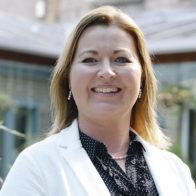
Julie Uí Choistealbha
Empowering ePortfolio Process (EEP) is an Erasmus+ funded research project focusing on the use of ePortfolios at the level of the student, teacher, work place and national policy. Research, sharing of practice and professional development opportunities were undertaken over a two-year period by a group of researchers from five countries: Finland, Denmark, Belgium, Ireland and Portugal. Over this two-year period a professional learning network (PLN) was created amongst the researchers supported by face-to-face meetings, transnational online meetings enabled by the WebEx application, a closed Facebook group and a project website. This paper presents this PLN as an outcome of the EEP project. Literature on PLNs is drawn upon to document the development of this particular network. Case studies of national (ePortfolio Ireland) and international ePortfolio PLNs (EuroPortfolio, Mahara User Group NY and ePortfolios Australia) are also presented. The paper concludes with possibilities for the future development potential of the EEP PLN post-project.
Background of Professional Learning Networks
The concept of continuous professional development is central to understanding the origin of PLNs. The Teaching Council (2011) describes it as “a major policy priority within education systems worldwide (p.v)”. A balance of teamwork and individual effort is needed for successful CPD (Guskey 1994; Little 1989). Research corroborates the shift in emphasis from learning with the focus on the individual to learning as part of a community (Rosenfield 1992). Other terms used to describe this are community of practice (Lave & Wenger 1991) and professional learning community (Owen 2014).
Definitions
Literature provides us with multiple, overlapping definitions of PLNs. According to Trust, Krutka, and Carpenter (2016), Tobin (1998) first coined the term PLN to describe a group of people and resources that support ongoing learning. Learning communities can be defined as “a group of people sharing and critically interrogating their practice in an on-going, reflective, collaborative, inclusive, learning oriented, growth promoting way” (Stoll, Bola, McMahon, Wallace, & Thomas 2006, 223). PLNs are broad, multi-faceted communities of practice which can be described as “uniquely personalized, complex systems of interactions consisting of people, resources and digital tools that support ongoing learning and professional growth” (Trust et al. 2016, 28). PLNs hold both individual and collective capacity building for members of the network (Sallah 2017; Stoll et al. 2006).
Development
Owens (2014), drawing on the work of Mulford (1998), states that PLNs have clear developmental stages that can be understood in the context of Tuckman’s (1965) model of group development which involves forming (setting up the PLN), storming (initial tensions within the group dynamic), norming (sharing and collaboration), and performing (task development and review). Owens (2014) also utilises Du Four’s (2004) work on preinitiation, initiation, developing and sustaining stages to describe the development of PLNS. She posits that irrespective on the model used to describe the development of the PLN, effective leadership from above is necessary throughout all the stages.
Characteristics
The literature on PLNs, as indicated in the following quote from Owen (2014) generally provides us with a long list of characteristics of PLNs:
“The research literature indicates considerable consistency in the key characteristics of teacher PLCs. Participants working together regularly over an extended timeline, shared values and vision, practical activities focused on student learning, taking an inquiry stance, being reflective and collaborating and sharing experiences, are characteristics which are consistently highlighted.” (Owen 2014, 55).
A review of the literature on PLNs has found that the following characteristics, grouped under the headings purpose, function and capability (Owen 2014), are common:
I. Purpose
Kilpatrick, Barret and Jones (2003) state that irrespective of the definition used, the common features of learning communities are a common or shared purpose. Stoll et al. (2013) posit that this shared purpose is to enhance practice and to benefit others. Bolam et al. (2005) found that although PLNs can have many common characteristics and work in similar ways, the reality of PLNs and their actual purpose can only be understood and worked out in the specific context of the group. They also posit that inclusive membership, and mutual trust, respect and support are key foundations of any PLN.
II. Function
Collegial interactions, shared practical activities, participant inquiry and opportunities for growth are shared functions of a PLN (Owen 2014). Kilpatrick et al. (2003) state that collaboration, partnership and learning, are key functions of a PLN. Reflective professional inquiry (Bolam et al. 2005) and research driven practice (Owen 2014) are also central to the function of a PLN.
III. Capability
PLNs have the capability to enhance professional development of the members. Chen and Chang (2006) believe that it is the interactional nature of the relationships in PLNs that facilitates deeper professional learning. Bolam et al. (2005) define the effective PLC as one which allows both individual and group learning. PLNs also have the capacity to enact change and to bring about improved student learning (Kilpatrick et al. 2003). To facilitate change, teamwork must be linked to established norms of continuous improvement and experimentation, and these norms then guide professional development efforts. In other words, there must be a balance of teamwork and collaboration with the expectation that all involved in the process- teachers, administrators, and non-instructional staff members – are constantly seeking and assessing potentially better practices (Little 1989). Such a balance promotes collegial interaction and acknowledges the naturally occurring relationships among professionals. In the context of virtual PLNs, the anytime/anywhere accessibility of the PLN is an added advantage (Trust et al. 2016).
Case Studies of Professional Learning Networks
The use of ePortfolios to enhance the quality of education has become increasingly important in Europe and globally (EQI 2017). The following brief descriptions of ePortfolio-based PLNs around the world showcase how effective PLNs can flourish in the context of ePortfolios.
a) ePortfolio Ireland (formerly MaharaIRL)
The EportfolioIreland user group hopes to build a community to share information, support learning & collaboration on eportfolios across Ireland (ePortfolio Ireland Yammer group)
The use of ePortfolios across the Irish education sector is in a growth phase. At the policy level, the Digital Strategy for Schools 2015–2020 (DES 2015) outlines a range of engagements with ePortfolios in an Irish context (EQI 2017).
MaharaIRL was founded in 2017 and rebranded ePortfolio Ireland in 2018 to better represent the broader interests of all members. This community currently has 92 members from 21 institutions (Donaldson, Buckley, Farrell, & Uí Choistealbha 2018). This grassroots community with a voluntary steering group holds online and face-to-face events to support faculty professional development and ongoing collaboration between ePortfolio practitioners in Irish higher education institutions (Donaldson et al. 2018). ePortfolio Ireland has held one conference (an innovative unconference) to date and another is planning a similar event in September 2018. Regular communication between members is maintained via Twitter, a Yammer group and email postings. Research outputs include an ebook, conference presentations and research papers.
b) ePortfolios Australia
ePortfolios Australia is a professional network which aims to support the use of e-portfolios in Australia and beyond through professional development activities and the sharing of resources, ideas and practice. (https://eportfoliosaustralia.wordpress.com)
According to Coffey and Ashford-Rowe (2014) there is huge potential for the use of ePortfolios in Australia due to the interest and investment shown by universities, funded projects, conferences and the availability of software.
ePortfolios Australia was founded in 2008. As a PLN it uses a multi-layered approach to its online supports including a website, email updates, an eUpdate newsletter (over 800 subscribers), Twitter (over 700 followers), Facebook group (over 300 followers), blog (over 1600 followers) and LinkedIn page. Each year the network hosts a two-day conference called the ePortfolio Forum which includes presentations, workshops, facilitated conversations and networking opportunities. Webinars are also hosted twice a year for members and non-members.
c) Mahara user Group NY
The Mahara User Group is a community group focussed on user discussions. It was formed in 2010 as local initiative in New York State, but has grown into an international user group since then with face-to-face and virtual meetings. (https://mahara.org/group/mahara-user-group-mug)
An online search shows that ePortfolios are used across the major universities in New York. The Mahara user group NY is part of a larger network of locally based Mahara-specific user groups. New York-based PLN has a membership of twenty-five on the Mahara website and one hundred and seventy-nine members on the group Facebook page. The network hosts both face-to-face meetings in New York and webinars.
d) EuroPortfolio
Europortfolio provides a network for those doing ePortfolio and related work across Europe; to build the use of e-portfolios across communities, and to provide opportunities for future partnership working. (http://www.eportfolio.eu/about-us#first)
According to Fernândez-Bajon (2015) policy on digital strategy at European level is based on the cultivation of a digitally inclusive society for its member countries. European funding streams such as Erasmus+ have allowed for Europe-wide projects to explore the use of eportfolios and digital competencies at a European rather that country specific level i.e. EPOS, EEP, COMP-Pass, and TELMS.
Europortfolio is a PLN comprising teachers, researchers and policy makers from across Europe which has remained active following the cessation of the Erasmus-funded EPNET project. The PLN is hosted on a website platform but also utilises discussion fora and news feeds to share information, predominantly about ePortfolio and digital-competence related events. The PLN is also subdivided into regional chapters for greater country-specific collaborations.
The Empowering ePortfolio Process (EEP) research group as a Professional Learning Network
Drawing on the literature and case studies above, this section of the paper looks at how the EEP research group can be considered as a PLN. Owen’s (2014) headings of purpose, function and capability are used to describe the EEP PLN.
I. Purpose
The EEP PLN agreed their shared purpose at the application stage of the funding process. This process was collaborative and every member had input into that shared purpose. The aim of the PLN is ‘to develop student-centred education by focusing on assessment and guidance practices and by developing an empowering and dynamic approach to the ePortfolio process’ (EEP n.d.). As per Stoll et al. (2013), this shared purpose is to enhance practice and to benefit others:
The main target of the project is to develop students’ continuous engagement in assessment and improve their digital competence in making their professional identity transparent by steering their career learning using an ePortfolio. (https://eepeu.wordpress.com/tietoja)
The context of the PLN (Bolam et al. 2005) was the subject of one of the first activities of the group post-funding. In order to understand each other’s context initially, each member filled in a questionnaire using Google Forms within the shared Google Drive. This questionnaire asked members to detail the following:
- Personnel information
- Elements that influence the engagement and inspiration of students and teachers
- Organisational guidelines and practices
- Environments and applications used
- Challenges
- Case studies of best practice
This information was then shared by means of presentations at the first meeting of the group in November 2016 so that each member understood the other members’ contexts. This information was then collated into an edited publication so that the context of the PLN could be understood by a wider audience (Kunnari & Laurikainen 2017). Great emphasis was placed on the development of an atmosphere of collegial trust and respect at the first meeting of the group through dialogue, social functions and team-building exercises.
II. Function
The function of EEP PLN can be described in terms of the 4 thematic outputs expected at the end of the funding cycle. The themes are as follows:
- Collection of engaging practices
- Student’s ePortfolio process and development of digital competence
- Competence transparency and its innovativeness
- Teacher’s engaging assessment and guidance process
Each theme was approached as a shared practical activity with participant inquiry and opportunities for growth (Owen 2014). There was a focus on both group and individual learning at each stage. One country led the design of the inquiry, with support from the project lead group (Finland). Each member then undertook research in their own country, this was shared in Google drive, presented in person at the team meeting and then edited for final publication. This process meant that the work of the PLN was collaborative (Kilpatrick et al. 2003) and research driven (Owen 2014) but with a focus on reflective inquiry (Bolam et al. 2005).
III. Capability
Professional learning at both the group and individual level is at the heart of the EEP PLN. Every effort is made to ensure that the learning is captured at each stage of the process through online meetings, presentations, publications and forums. An example of the capability of the PLN to deepen profession learning in an interactional way (Chen & Chang 2006) is the use of the closed Facebook group by members. This allows members to share learning in an informal space, disseminate information of benefit to others and to celebrate each other’s publications and conference presentations. The concept of enacting change (Kilpatrick et al. 2003) is central to the work of the EEP PLN, in particular the digital competence of the students and teachers using the ePortfolios. In order to do this, each member country designed, implemented and reviewed a pilot activity in their home institution. These activities included:
- The creation of organizational and pedagogical support materials for ePortfolios
- Tracking a group of students using a new ePortfolio platform
- Introducing new ePortfolio platforms to students
- The identification and analysis of prior and current teacher practices
- The introduction of competency development frameworks for ePortfolios
Although undertaken as individual activities, the learning from these pilot projects was shared with all members so that each could seek and assess potentially better practices for their own institutions (Little 1989). Although not an exclusively virtual PLN, the incorporation of virtual platforms (Google Drive, WebEx, Facebook, WordPress) to complement the collegial face-to-face meetings meant that the anytime/anywhere accessibility of the PLN was an added advantage (Trust et al. 2016).
Concluding discussion – future possibilities for the EEP PLN
The scale of the research outputs and the individual and group learning of the EEP PLN within the funded phase is such that an exploration of how the PLN can continue post-funding is warranted. It is clear that the PLN has a firm foundation in terms of its purpose, function and capability (Owen 2014). The PLN has developed in line with Tuckman’s (1965) model of group development which involved forming (setting up the PLN at the application for Erasmus funding stage), storming (initial tensions within the group dynamic as members got to know each other), norming (sharing and collaboration in relation to the thematic outputs) and performing (development and review of the pilot activities and related research outputs). DuFour’s (2004) sustaining stage is the development stage most applicable to the PLN now. One of the greatest risks to the true nature of PLNs as articulated by Fullan (2006) is that they are viewed as superficial innovations and that they do not lead to sustained collaborative cultures.
Collaborative cultures are ones that focus on building the capacity for continuous improvement and are intended to be a new way of working and learning. They are meant to be enduring capacities, not just another program innovation. (Fullan 2006, 10).
Drawing on the case studies of national and international ePortfolio related PLNs, the following strategies may aid in sustaining the EEP PLN post-cessation of funding so that the professional learning is continuous and not just project associated.
- Branding: The branding of the EEP PLN was very much associated with the Erasmus+ funding application and its associated thematic outputs. If the PLN is to move into a new sustaining stage a re-branding will enable a new articulation of purpose, function and capability (Owen 2014).
- Events: A key characteristic shared by all the case studies is the organisation of events such as conferences and fora to bring together interested stakeholders and to provide opportunities for the organising or steering committee to work together on a collaborative project.
- Online presence: In the absence of funding stream, a strong online presence, as seen in the case studies, helps to maintain the collegial dynamic of the PLN. This could include a continuation of the FaceBook group, a Yammer group, blog, eUpdate newsletters, Twitter account, LinkedIn group and updated website.
- Research collaborations: The work of the EEP PLN group to date has been research driven (Owen 2014) and a way to sustain this capacity for inquiry is to undertake joint research projects, co-author journal articles and co-present at conferences.
- Webinars: Webinars have been used by all of the case study PLNs to allow for flexible and cost-effective professional development opportunities for members. This would be an effective way to ensure that the shared professional learning capability of the PLN is sustained.
- Increased membership: The membership of the EEP PLN has to date been restricted to those named on the funding application and their colleagues. The sustaining phase of the PLN, post-cessation of funding, would allow for the membership of the PLN to increase.
- Joining in with other networks, nationally and internationally: A sustaining action would be for the rebranded EEP PLN to join the networks named in this paper, and others, in order to broaden the PLN reach, learning and impact. Fullan (2006, 10) describes this as “lateral capacity building”.
DuFour et al. (2010) state that the complex challenge of creating a PLN is more than following prescribed stages or steps. They posit that how things are done is “often as important as what is being done” (39). Their emphasis on the centrality of hope, passion, and persistence in sustaining an effective PLN is a key message for the EEP PLN as it moves into the next growth phase. The closing question to the 2010 publication is food for thought for the EEP PLN members:
“In what ways does the PLC concept support a conscious and sustained effort to create the conditions that allow educators to become more skilful in their profession” (DuFour 2010, 40)?

This article was produced in the Erasmus+ (KA2 action) funded project “Empowering Eportfolio Process (EEP)”. The beneficiary in the project is Häme University of Applied Sciences (FI) and the partners are VIA University College (DK), Katholieke Universiteit KU Leuven (BE), University College Leuven-Limburg (BE), Polytechnic Institute of Setúbal (PT) and Marino Institute of Education (IE). The project was implementated during 1.9.2016–30.11.2018.
Author

Julie Uí Choistealbha, Ed.D., is a senior lecturer and Director of Undergraduate Studies in Marino Institute of Education. Her research interests include work-based learning for students of education, the assessment of work-based learning, the use of ePortfolios in competency- based assessment, programme design and school/university partnerships. Julie is a Trinity College Research Fellow in the School of Education’s Research in School Education (RISE) research group.
References
Bolam, R., McMahon, A., Stoll, L., Thomas, S., Wallace, M., Greenwood, A., & Smith, M. (2005). Creating and sustaining effective professional learning communities. Bristol: University of Bristol.
Chen, J. Q. & Chang, C. (2006). Testing the “Whole Teacher” Approach to Professional Development: A Study of Enhancing Early Childhood Teachers’ Technology Proficiency. Early Childhood Research & Practice, 8(1).
Coffey, U. & Ashford-Rowe, K. (2014). The changing landscape of ePortfolios: A case study in one Australian university. Australasian Journal of Educational Technology, 30(3).
COMP-Pass (n.d.). Retrieved 10 August 2018 from http://comp-pass.eu
Department of Education and Skills, DES (2015). Digital Strategy for Schools 2015–2018. Retrieved 10 August 2018 from https://www.education.ie/en/Publications/Policy-Reports/Digital-Strategy-for-Schools-2015-2020.pdf
Donaldson, L., Buckley, K., Farrell, O., & Uí Choistealbha, J. (2018). Harnessing an Unconference Approach to Develop ePortfolio Competencies. Presentation at ePortfolios & More: The Developing Role of ePortfolios within the Digital Landscape, Dublin City University, Dublin, 24th May.
DuFour, R. (2004). What is a “professional learning community”? Educational leadership, 61(8), 6–11.
DuFour, R., DuFour, R., Eaker R., Many, T., & Mattos, M. (2010). Learning by doing: A handbook for Professional Learning Communities at Work (Action Guide). Retrieved 10 August 2018 from https://www.solution-tree.com.au/learning-by-doing-3rd-ed
EEP (n.d.). Retrieved 10 August 2018 from https://eepeu.wordpress.com/tietoja
ePortfolios Australia (n.d.). Retrieved 10 August 2018 from https://eportfoliosaustralia.wordpress.com
EPOS (n.d.). Retrieved 10 August 2018 from https://epos-portfolio.de/de
EQI (2017). Evaluation of the PDST ePortfolio Initiative. Retrieved 10 August 2018 from https://www.researchgate.net/profile/Martin_Brown3/publication/324028582_Evaluation_of_the_PDST_ePortfolio_initiative_Formative_Assessment_Using_ePortfolios/links/5ab9bf830f7e9b68ef533b79/Evaluation-of-the-PDST-ePortfolio-initiative-Formative-Assessment-Using-ePortfolios.pdf
EuroPortfolio (n.d.). Retrieved 10 August 2018 from http://www.eportfolio.eu/about-us#first
Fernández-Bajón, M. T. (2015). Information Policies: Agenda for Digital Inclusion in the European Union. In B. Passarelli, J. Straubhaar, & A. Cuevas-Cerver (Eds.) Handbook of research on comparative approaches to the digital age revolution in Europe and the Americas. IGI Global.
Fullan, M. (2006). Leading professional learning. School Administrator, 63(10), 10.
Guskey, T. R. (1994). Professional Development in Education: In search of the optimal mix. Paper presented at the 1994 annual meeting of the American Education Research Association, New Orleans, Louisiana.
Kilpatrick, S., Barret, M., & Jones, T. (2003). Defining Learning Communities. CRLRA Discussion Paper Series, Centre of Research and Learning, University of Tasmania.
Kunnari, I. & Laurikainen, M. (eds.) Collection of Engaging Practices in ePortfolio Process. Retrieved 10 August 2018 from https://eepeu.wordpress.com/publications
Lave, J. & Wenger, E. (1991). Situated learning: Legitimate peripheral participation (Vol. 521423740). Cambridge: Cambridge University Press.
Little, J. W. (1989). The persistence of privacy: Autonomy and initiative in teachers’ professional relations. Paper presented at the 1989 annual meeting of the American Education Research Association, San Francisco.
Mahara User Group NY (n.d.). Retrieved 10 August 2018 from https://mahara.org/group/mahara-user-group-mug
Mulford, B. (1998). Organisational learning and educational change. In A. Hargraves, A., Lieberman, A., M. Fullan, & D. Hopkin (eds). International handbook of educational change. Norwell, MA: Kluwer, 616–664.
Owen, S. (2014). Teacher Professional Learning Communities: Going beyond Contrived Collegiality toward Challenging Debate and Collegial Learning and Professional Growth. Australian Journal of Adult Learning, 54(2), 54–77.
Rosenfield, S. (1992). Developing school based consultation teams: A design for organisational change. School Psychology Quarterly, 7(1), 27–46.
Stoll, L., Bola, R., McMahon, A., Wallace, M., & Thomas, S. (2006). Professional Learning Communities: A review of the literature. Journal of Educational Change, 2, 221–258.
Teaching Council (2011). Continuous Professional Development Among Primary Teachers in Ireland: A Report Compiled by the ESRI on behalf of The Teaching Council. Dublin: ESRI/The Teaching Council.
TELMS (n.d.). Retrieved 10 August 2018 from http://www.h2learning.ie/portfolio/technology-enhanced-learning-mentoring-support-telms
Tobin, T. R. (1998). Building your Professional Learning Network. Retrieved 10 August 2018 from http://www.tobincls.com/articles/
Trust, T., Krutka, D. G., & Carpenter, J. P. (2016). “Together we are better”: Professional learning networks for teachers. Computers & education, 102, 15–34.
Tuckman, B. W. (1965). Developmental sequence in small groups. Psychological bulletin, 63(6), 384.





